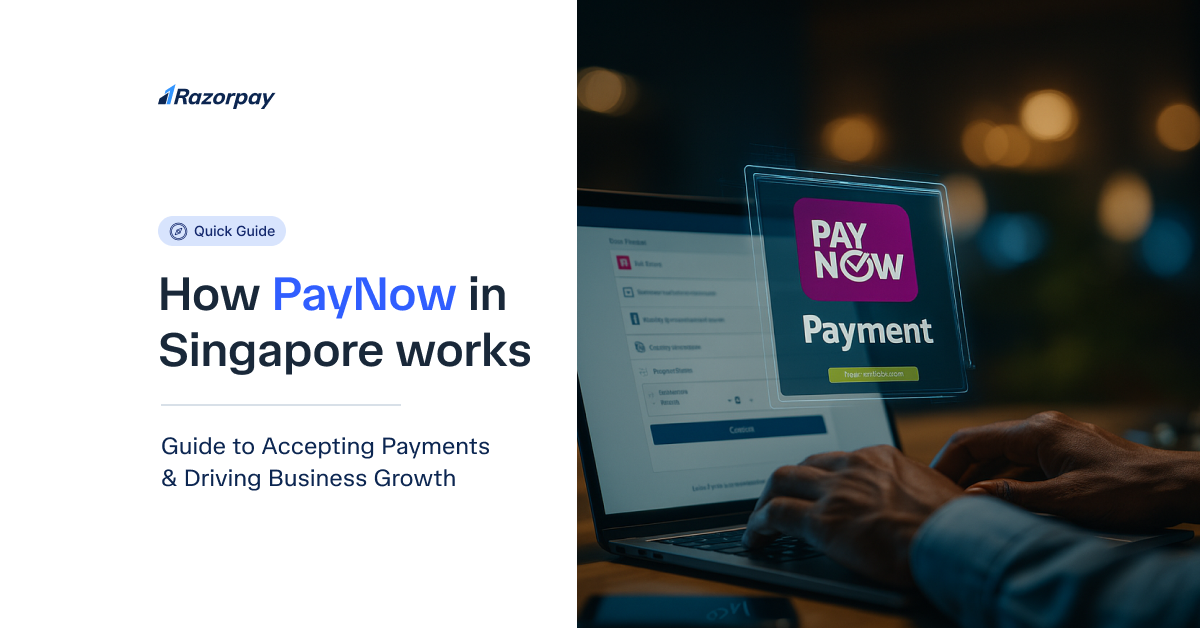For any business operating in Singapore, accepting PayNow is no longer optional—it’s essential. Before its launch, the payment landscape was a mix of cash, NETS, and cumbersome iBanking transfers that required manual entry of long account numbers. The arrival of PayNow, as part of Singapore’s “Smart Nation” initiative, fundamentally changed how consumers and companies transact, making it a critical tool for business growth.
But how does a business move from simply displaying a QR code to using PayNow as a strategic asset for operational efficiency? This comprehensive guide provides a step-by-step walkthrough for businesses of all sizes. We’ll cover everything from the initial setup of PayNow Corporate to automating your payment workflows to eliminate manual reconciliation and scale effectively.
Key Takeaways
- Essential for Business: High consumer adoption makes accepting PayNow a necessity for any customer-facing business in Singapore to avoid customer friction and lost sales.
- Simple Setup for Starters: Businesses can start accepting payments quickly by registering for PayNow Corporate with their bank and using a static SGQR code at their point-of-sale.
- The Scaling Challenge: As transaction volume grows, the manual reconciliation of PayNow payments becomes a significant operational bottleneck, leading to costly errors and wasted administrative hours.
- Automation is the Solution: Integrating a payment platform like Razorpay Singapore automates the entire process with dynamic QR codes and auto-reconciliation, saving time, improving cash flow, and providing a professional customer experience.
What is PayNow and Why Should Your Business Use It?
PayNow is an instant, 24/7 fund transfer service that allows payments to be sent and received using a simple proxy linked to a bank account—most commonly, a Unique Entity Number (UEN) for businesses. Its primary success factor is the removal of friction. Customers no longer need to handle cash or enter complex bank account details; they can pay instantly by scanning a QR code.
For businesses, the strategic benefits are clear and directly impact the bottom line:
- Dramatically Lower Transaction Costs: Unlike typical credit card fees which can range from 2.5% to 3.5%, PayNow transactions are often processed for a low, flat fee or even for free. This directly protects your profit margins on every sale.
- Instant Settlement and Improved Cash Flow: Unlike card payments that can take 1-3 business days to clear, PayNow funds are credited to your bank account in seconds. This immediate access to funds is critical for SMEs, enabling better inventory management, timely supplier payments, and overall financial agility.
- Meet High Customer Adoption: In today’s market, Singaporean consumers expect to see a PayNow option at checkout. Not offering it can be a point of friction that leads to cart abandonment and lost sales, as customers may opt for a competitor with a more convenient payment process.
Did You Know?
According to the Monetary Authority of Singapore (MAS), PayNow processed over S$100 billion in transactions in 2023.
This confirms its status as the dominant payment method in Singapore’s digital economy.
A Step-by-Step Guide to Accepting PayNow Payments
Step 1: Register for PayNow Corporate with Your Bank
Before you can accept any payments, you must register your business for the service.
- Action: Contact the bank where you hold your business account and ask to register for PayNow Corporate. You will typically need your company’s UEN and business bank account details ready.
- Process: The bank will officially link your company’s UEN to your business bank account. This UEN now acts as your unique PayNow ID.
- Outcome: Your business is officially enabled to receive payments via PayNow.
Step 2: Get and Display Your Static SGQR Code
Once registered, your bank will provide you with a Singapore Quick Response Code (SGQR).
- What it is: A static SGQR code is a single, reusable QR code linked directly to your UEN.
- How it works: Customers scan the code, are prompted to manually enter the payment amount in their banking app, add a reference (optional), and confirm the transaction.
- Best Use Case: This method is ideal for businesses with in-person transactions where the amount varies, such as retail stores, cafes, hawker stalls, and service providers who invoice clients. You can simply print the code and display it at your point-of-sale or include it on your invoices.
Step 3: Face the Manual Reconciliation Challenge
While a static QR code is easy to set up, it creates a significant operational challenge as your business grows. Because the customer enters the amount manually and there’s no automatic link to an order number, your finance team is left with a difficult and time-consuming task.
Business Example: An e-commerce store receives 50 PayNow payments in a day for different order amounts. The finance team must manually open the bank statement, look at each incoming transfer, and try to match the amount and the customer-entered reference to a specific order in their sales system before marking that invoice as paid. This process is slow, inefficient, and can lead to serious errors like failing to fulfill a paid order or shipping the wrong items. The cost of these mistakes, in both time and customer trust, often far exceeds the cost of a proper payment system.
How to Automate and Scale PayNow Payments
Step 4: Integrate a Payment Platform for Full Automation
To solve the reconciliation bottleneck, the next step is to automate your entire payment workflow. This is achieved by integrating a unified payment platform. A payment platform acts as the central hub for all your transactions, connecting your website or invoicing system directly to the PayNow network to enable two-way communication.
A platform like the Razorpay Singapore Business Payments Suite transforms PayNow from a manual process into a seamless, automated system. Instead of a static QR, the system generates a dynamic QR code for every transaction.
- What it is: A dynamic QR code is a unique, single-use code generated for a specific invoice. It has the exact payment amount and invoice details pre-filled.
- How it works: At checkout, the customer scans a QR code that is already populated with the correct amount. Once they approve the payment, Razorpay Singapore’s system instantly captures the confirmation and automatically marks the specific invoice as “paid” in your dashboard.
This automated approach delivers powerful business results:
- Eliminate Manual Reconciliation: This is the core value. Free up your finance team from hours of error-prone manual work. Our dashboard provides a single, consolidated view of all payments—from PayNow, cards, and other methods—that are reconciled automatically in real-time.
- Improve the Customer Experience: Offer a smooth, professional, and error-free checkout that builds customer trust and reduces drop-offs. No manual amount entry means fewer mistakes for your customers.
- Gain Real-Time Financial Oversight: With instant, automated payment tracking, you have a precise, up-to-the-minute view of your company’s cash flow, enabling better financial planning.
- Streamline Refunds: Need to issue a refund? Process it with a single click from the dashboard, without needing to log into your bank’s portal. The platform handles the transaction and updates your records automatically.
Ready to Automate Your PayNow Collections?
Stop manually matching payments and start focusing on growth.
Learn how Razorpay Singapore can automate your PayNow collections and streamline your finances.
Conclusion
PayNow is an essential component of doing business in Singapore. The strategic choice for a growing business is not whether to adopt PayNow, but how to implement it for maximum efficiency. While a static QR code is a valid starting point, true scalability and operational excellence are unlocked through automation. By leveraging a robust payment platform, businesses can transform PayNow from a simple payment method into a powerful driver of financial accuracy and customer satisfaction.
Frequently Asked Questions (FAQs)
1. What are the PayNow fees for businesses in Singapore?
Most banks offer PayNow Corporate with very low or zero per-transaction fees, making it significantly more affordable than traditional credit card processing. Businesses should check with their specific bank for the exact fee structure.
2. PayNow vs. Credit Card: What’s the Difference for Businesses?
A PayNow transaction is a direct, instant bank-to-bank transfer where funds are settled in seconds. A credit card transaction involves multiple parties, typically takes 1-3 business days to settle, and incurs higher percentage-based merchant fees.
3. How do I get a PayNow SGQR code for my business?
You can register for PayNow Corporate through your business’s primary bank. Once registered, they will provide your unique SGQR code linked to your company’s UEN, which you can display at your physical store or online checkout.
4. Can my business issue refunds through PayNow?
Yes, a business can initiate a refund by making a PayNow transfer back to the customer. A modern payment platform like Razorpay Singapore simplifies this process by allowing you to manage and track these refunds directly from your sales dashboard.
5. Can I integrate PayNow with my e-commerce platform?
Yes. The easiest and most reliable way to do this is by using a payment platform that provides a pre-built integration or plugin. Razorpay Singapore, for instance, offers seamless plugins for all major e-commerce platforms, allowing you to enable PayNow at checkout in just a few clicks without any custom coding.




